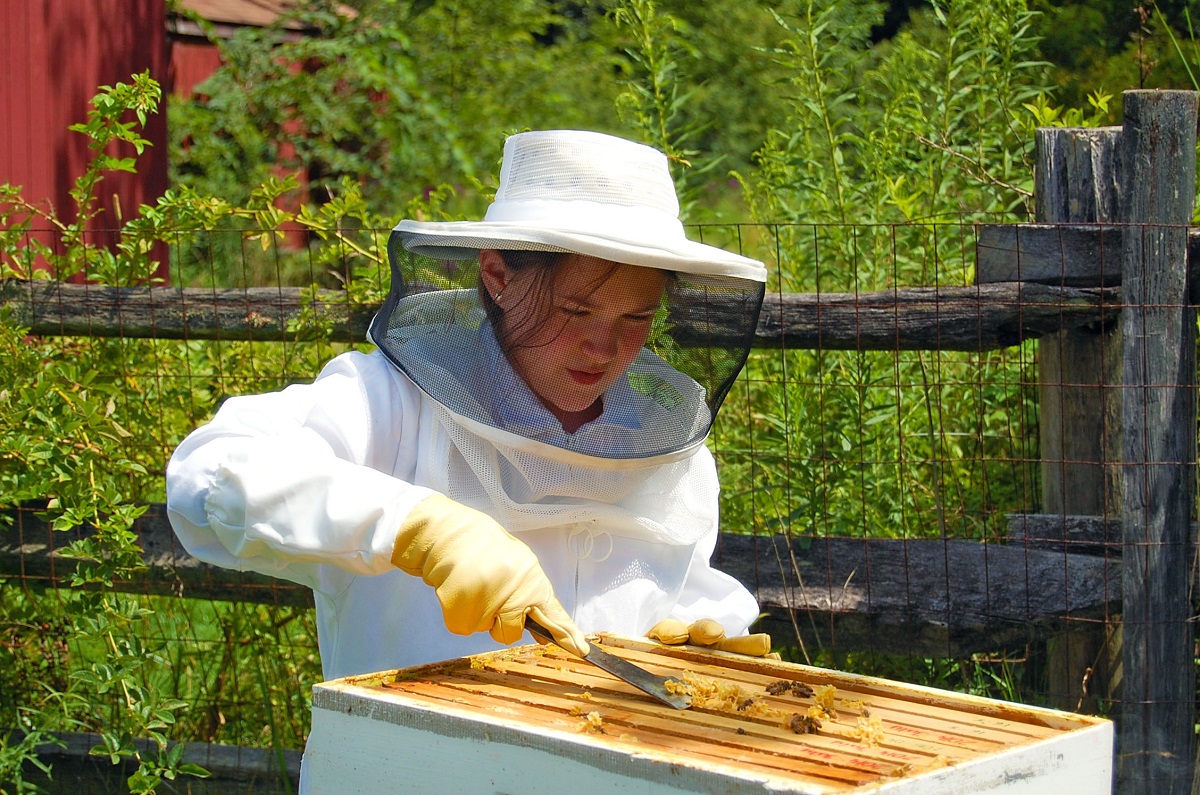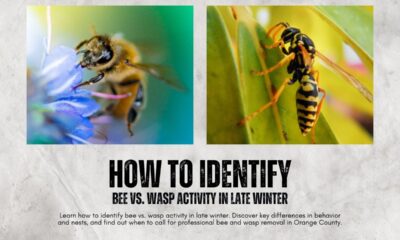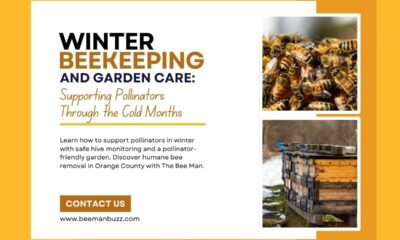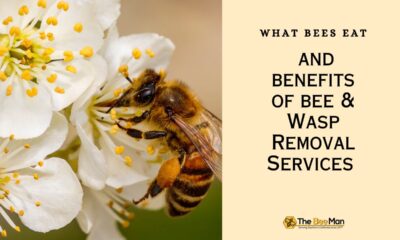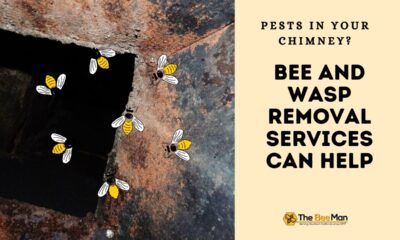Home Improvement
Become a Professional Backyard Beekeeper with These Tips
DIY Beekeeping is becoming ever more popular! The US Department of Agriculture’s Statistics estimates that between 2013 and 2014 honey production has increased to 19% and average hive production exceeded 65 pounds. With a little bit of knowledge, starting a hive is a sweet way to support pollinators and turn this hobby into honey!
Understanding the bees
A beehive is home to a colony of up to 80,000 bees. From a distance, all bees look very similar, but if you pay closer attention you will notice three different types of bees in a beehive:
• Queen: There is only one queen in the hive. The Queen is the biggest bee and the only woman with ovarian development; her task is to lay eggs – up to 1,500 per day. The health of the Queen is key to a healthy and productive hive.
• Workers: Bees with sexual dysplasia who cannot mate are workers (Workers can lay eggs if the colony loses its Queen, but in that case the offspring are drones).
Their role is to collect water and food, take care of the larvae, and protect the hive from outside invaders. There are about 60,000 workers in the colony.
• Drone: The only male in the hive, the drone mates with the Queen to maintain the number of colonies. The drone does not work, and there is no stab.
The number of drones in the colonies varies from season to season; spring/summer populations are high, but at the end of the season, when bees find it harder to get food, drones are driven out of the hive to die.
Designing a hive
The beehive consists of seven components:
1. Hive cover: The cover serves as the roof of the hive to protect the colony.
2. Inner protection: The wooden cover at the top of the super (the part that looks like drawers). The central hole provides ventilation and insulation.
3. Super: According to the size of the hive, a super can be medium or shallow, which refers to their depth. The colony can have several supers and can hold 8 to 10 frames.
4. Queen Exclusion: This narrow screen separates the hive from the super body, preventing the Queen from spawning and raising the brood (baby) in the super mother who stores the honey.
5. Hive body: The honeycomb body is more profound than the super body, and the frame is placed based on the bees living on the bees.
The Queen lives in the hive, spawns, raises eggs, and the bees store honey here for the bee colony.
6. Bottom board: The screen plate acts as a hive bottom plate.
7. Hive stand: Any table/bracket that keeps the hive off the ground, providing insulation.
In addition to the hive, beekeepers need some essential equipment:
Smoker: Blowing honey into the hive will soothe the bees before checking or collecting honey.
Hive tool: It is a tool with a narrow metal edge that assists in separating the frame during the hive inspection.
Capping knife: It is a serrated knife that opens the honeycomb during harvest to begin flow.
Protective equipment: Most beekeepers wear veil and gloves to prevent the bees from biting. When using a hive, it is essential to wear light colors (bees will treat dark colors as dangerous and may be more prone to stinging).
You can buy a beginner’s kit and bee removal items from a beekeeping store Orange County. Some starter kits include a hive and all the equipment you need to get started.
In spring, when the trees and flowers are in full bloom, start your hive and give your colony a huge amount of nectar and pollen to spend the winter.
Buy bees
Once you have a hive, you need a bee. You can buy a “package” of bees – a complete hive that includes queens, workers, and drones – perched in your hive.
The beekeeping equipment store sells for about $80 at bee removal stores Orange County. Some starter kits include a hive and all the equipment you need to get started. As beekeeping becomes more popular, the demand for bees is high; it is a good idea to book packages in advance so that your hive will not be uninhabited throughout the season.
Maintenance of the hive
Please follow the steps to perform successful bee removal in Orange County:
• Wear protective gear.
• Approach the hive from the back (opposite the entrance), remove the honeycomb cover, and use a smoker to blow the smoke into the hive to calm the bees. After the activity has disappeared, use the honeycomb tool to remove one of the outer frames.
• Hold the frame for inspection. Look for signs of the Queen, usually the presence of eggs. Healthy bees have a tight brooding pattern or eggs that are tightly packed together in a comb. The sealed brood is tan/brown; the sealed hive is white/light yellow.
• Check every frame and add more smoke as needed to keep the bees calm.
• If the hive on each frame in the super is filled with brooding or capped honey, add another super hive on top of the original so that the bees can expand their colonies.
Harvesting honey
For beekeepers, the sweetest time of the year is the harvest season!
• Approach the hive from behind, remove the honeycomb cover, and use a smoker to blow the smoke into the hive.
• Remove the top supers one at a time. Remove the frame with the hooded honey starting with the outer frame.
• Use a bee brush (soft brush) to remove the bees from the frame gently.
• After the bee leaves the frame, place it in on an empty super with a cover.
• Gently cut the honeycomb cover with a capping knife.
• Place the uncovered frame in the honey extractor
• After the extractor is full of frames, close the lid and turn the handle to rotate the frame.
• Open the spigot and strain honey with cloth (or filter) to remove wax and other debris and place in the bucket.
• Bottle honey in a clean, sterile bottle.
• Taste
Becoming a backyard beekeeper is fun. Make sure you master all the tips to ensure the safety of the bees and yourself. Do you have any professional beekeeping tips that we have missed? Let us know in the comment section below.

